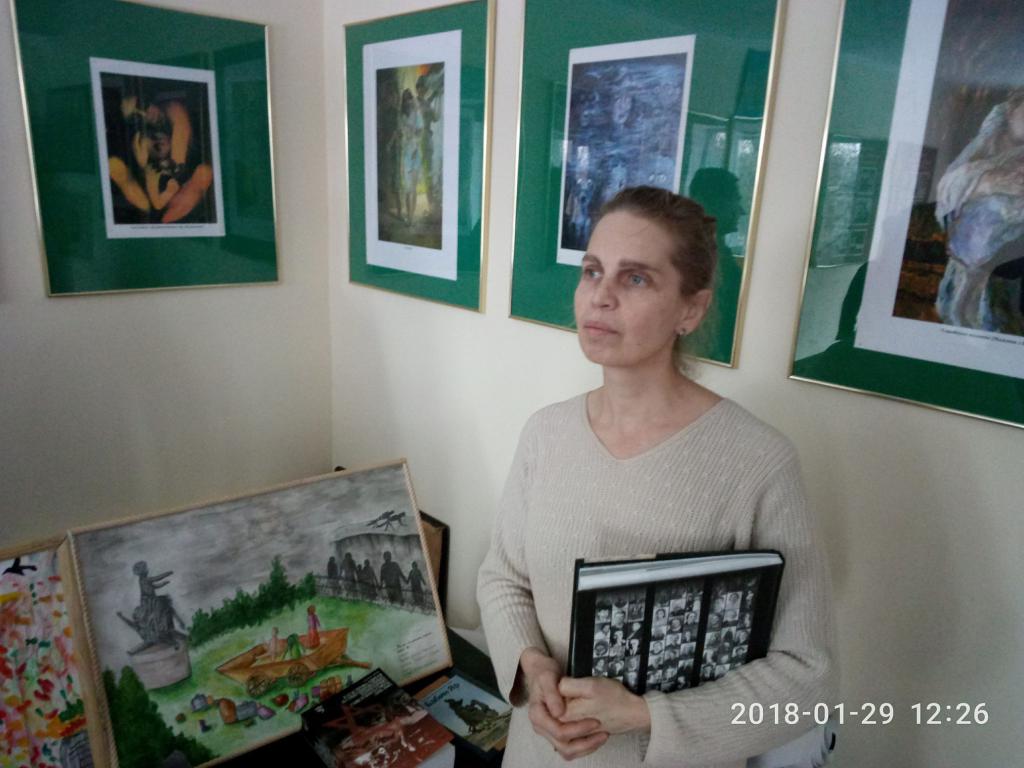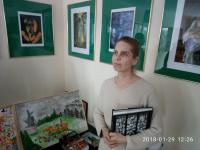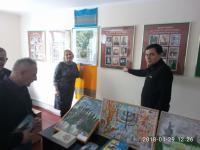International Holocaust Remembrance Day
For the first time, the "Holocaust" as a term was used in the first decade of the XX century. This word came from the Greek Bible texts and meant "a sacrifice or offering entirely consumed by fire".
This terrible and inhumane phenomenon that occurred during the period 1933-1945 and was called the Holocaust, led to the deliberate extermination of almost one-third of Jews, as well as countless other members of the national minority, generated by hatred and fanaticism, stoked by racism and humiliating prejudices, which ruled then in fascist Germany - this should not happen again!
In the history of mankind, there were many "dark spots", but so deeply society has never fallen.
One of the most important directions of Hitler's terror during the war was determined by the racist theory of the Nazis. The extermination of "inferior" peoples and ethnic groups has become the main line of Berlin's policy in East Europe. Ukraine, along with other European states, became a terrible ground for the Nazi conveyor of death.
"Actions", which were conducted by the Einsatzgruppen after the German troops' entry, in Galicia were the first in the territory of Ukraine. In Lviv, special teams "4-A" and "4-B" resorted to pogroms and arrests in the first days after the occupation. Having accused the Communists and Jews in the deaths of prisoners in the Soviet prisons, they caused a surge of Yudophobia in a certain part of the city's population. During the week in Lviv, 6,000 Jews were killed as a result of pogroms initiated by the Nazis.
With the accession of the Galicia Districts to the General Governorate, "the transition from total murders in areas where the military operated, to the systematic destruction according to the directives developed by the Office of the Himmler" began.
In November 1941 a separate section of the city was set up in Lviv to create a Jewish ghetto. At the same time, ghettoes appeared in other cities and towns of Galicia. The "final solution" of the Jewish question took place in the camps and the ghetto of Drohobych, Borislav, Ternopil, Bolehov, Skole, Stryi and other settlements. In general, 610 thousand Jews became victims of the Nazi Holocaust policy in Galicia.
One of the first acts of the catastrophe in the German-occupied Ukrainian territories was "Berdychiv tragedy". In this town during August-November 1941, about 30,000 local Jews were shot dead.
In just a month, German special forces destroyed 3,500 Jews in Vinnitsa and 22,500 Jews in Kamyanets-Podilskyi region. In the ghetto, on the territory of these two regions, there were 106 thousand Jews in 35 places of forced detention. The place of mass executions in April 1942 was Pyannychansky Forest near Vinnytsia, where, after the raids, about 10 thousand Jews were assembled and destroyed at a local stadium. In total occupants killed more than 105 thousand Jews in Vinnytsia.
Babyn Yar in Kiev, where from September 29 to October 3, 1941, special Nazi team killed more than 52 thousand Jews, Gypsies, Ukrainians, Russians, Poles and Belarusians, became a huge fraternal grave of representatives of different peoples. During the years of occupation, this place became a necropolis for 100-150 thousand civilians (mostly Jews) and Soviet prisoners of war.
In the military zone, the extermination of Jews also was especially intensive from the middle of 1942. In Zaporizhzhia region, by March 1942, 8,500 Jews were killed. In October 1942, Nazis shot dead three thousand children from mixed marriages with Jews in Melitopol. In 1941-1942 the Nazis destroyed 16,000 Jews in the Stalino (Donetsk) region, 18,000 in Dnipropetrovsk, 2,000 in Voroshilovgrad, 1 thousand in Sumy, Poltava - 14,000, in Kharkiv - 12,000 in Kherson - 3,5, Chernihiv - 3 thousand Jews. In Crimea, 30 thousand Jews and Karaites became victims of the catastrophe. In general, on the Livoberehzia and in the Crimea, Nazis killed 112 thousand people of Jewish nationality.
Nazis' terrible policy of terror against the Jews ruined them as an ethnoreligious and socio-cultural community in Ukraine. The victims of the Holocaust on the Ukrainian lands were about 1 million Jews.
International Day of Holocaust Remembrance, celebrated annually on January 27, adopted by the UN General Assembly on November 1, 2005, resolution A / RES / 60/7. The purpose of introducing this sad memorable date is the active educational work and assistance in preventing possible future acts of genocide, as well as disregard for the value of human life.
The international community "unconditionally condemns all manifestations of religious intolerance, incitement, persecution or violence against individuals or communities caused by ethnic origin or religious beliefs wherever they may have taken place," the resolution reads. Today's and future generations should not forget the lessons of such tragic disasters, otherwise, there may be a very high risk of repeating such moments in the future.On this day, the Day of Sorrow and Memory, we join in the common sorrow and we seek to sympathize with all this pain and loss, the name of which is the Holocaust. It can't be filled up. We will remember ...









